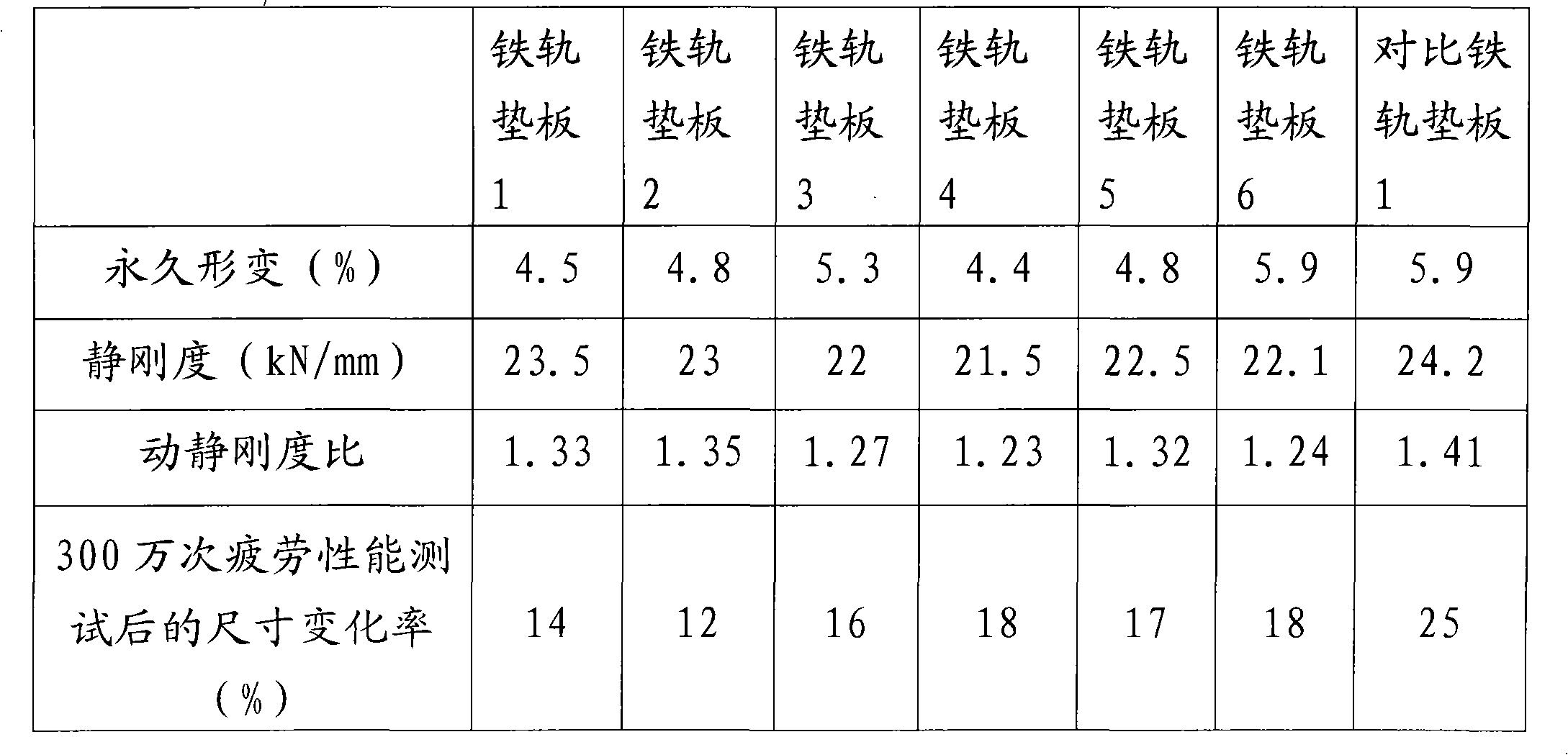Rail tie plate and preparation method thereof
A technology for rails and backing plates, which is applied in the field of microporous polyurethane elastomer rail backing plates and its preparation, and can solve the problems of the most serious impact on the performance of final products, high raw material costs, and high melting points of raw materials
- Summary
- Abstract
- Description
- Claims
- Application Information
AI Technical Summary
Problems solved by technology
Method used
Image
Examples
Synthetic example 1
[0085] 68g of polyoxypropylene ether diol (purchased from Takahashi Petrochemical Company) with an average functionality of 2 and a number average molecular weight of 4000 was vacuum dehydrated at 105-115°C for 2-4 hours to ensure that the moisture content was lower than 0.04 wt%. stand-by. Under nitrogen protection, 100g of self-made isocyanate mixture (wherein the content of 2,4-diphenylmethane diisocyanate is 20wt%, the content of uretonimine and carbodiimide is 2wt%, 4,4-di The content of phenylmethane diisocyanate is 78wt%) into the four-necked flask, and keep the temperature at 50-70°C, then add 0.3g of commercially available benzoyl chloride, then use 1-1.5h to dissolve the aforementioned treated polyoxygen Propylene ether glycol is slowly added dropwise to the flask. After the dropwise addition, continue to react at a temperature of 60-75°C for 1.5-2 hours. Sampling and analysis shows that the NCO content reaches the predetermined standard (NCO content is 19wt%). The ...
Synthetic example 2
[0087] 76g of polyoxypropylene ether triol (purchased from Takahashi Petrochemical Company) with an average functionality of 3 and a number average molecular weight of 6000 was vacuum dehydrated at 105-115°C for 2-4 hours to ensure that the moisture content was less than 0.04%, and then stored stand-by. Under nitrogen protection, 100g of self-made isocyanate mixture (wherein the content of 2,4-diphenylmethane diisocyanate≤1wt%, the content of uretonimine and carbodiimide≤2wt%, 4,4-diisocyanate content of phenylmethane diisocyanate ≥ 97wt%) into the four-necked flask, and keep the temperature at 50-70 ° C, then add 0.5 g of commercially available phosphoric acid, and then use 1-1.5 h to dissolve the aforementioned treated polyoxypropylene ether Triol is slowly added dropwise in the flask, and after the dropwise addition, continue to react at 60-75°C for 1.5-2 hours, take a sample and analyze that the NCO content reaches the predetermined standard (the NCO content is 18wt%) and ...
Synthetic example 3
[0089] 30g polyoxypropylene ether diol (purchased from Takahashi Petrochemical Company) with average functionality=2, number average molecular weight=4000 and 30g polyoxypropylene ether triol with average functionality=3, number average molecular weight=6000 (purchased The mixture formed from Takahashi Petrochemical Company) was vacuum dehydrated at 105-115° C. for 2-4 hours to ensure that the moisture content was less than 0.04%, and then stored for use. Under nitrogen protection, first 100g of homemade isocyanate mixture (wherein the content of 2,4-diphenylmethane diisocyanate is 50wt%, and the content of 4,4-diphenylmethane diisocyanate is 50wt%) was added to the four-necked flask , and keep the temperature at 50-70°C, then add 0.3g of commercially available benzene methanesulfonic acid, and then use 1-1.5 hours to mix 60g of the polyoxypropylene ether diol and polyoxypropylene ether triol that have been treated above. Slowly add the ether mixture dropwise into the flask, c...
PUM
| Property | Measurement | Unit |
|---|---|---|
| pore size | aaaaa | aaaaa |
| viscosity | aaaaa | aaaaa |
| viscosity | aaaaa | aaaaa |
Abstract
Description
Claims
Application Information
 Login to View More
Login to View More - R&D
- Intellectual Property
- Life Sciences
- Materials
- Tech Scout
- Unparalleled Data Quality
- Higher Quality Content
- 60% Fewer Hallucinations
Browse by: Latest US Patents, China's latest patents, Technical Efficacy Thesaurus, Application Domain, Technology Topic, Popular Technical Reports.
© 2025 PatSnap. All rights reserved.Legal|Privacy policy|Modern Slavery Act Transparency Statement|Sitemap|About US| Contact US: help@patsnap.com


